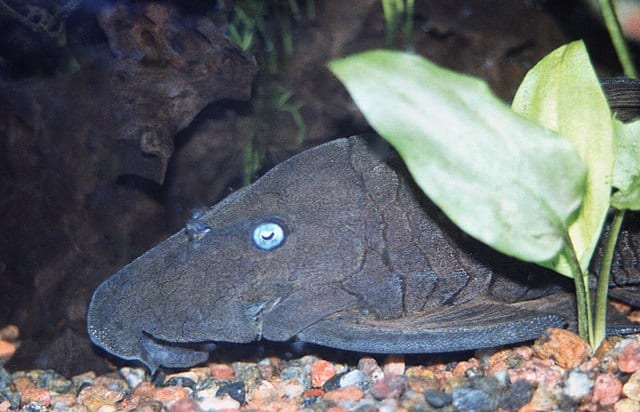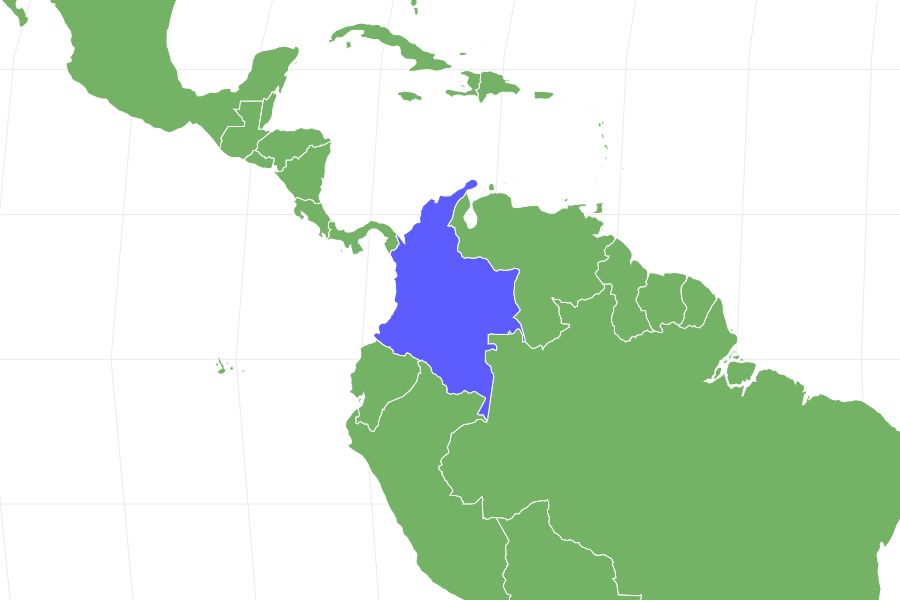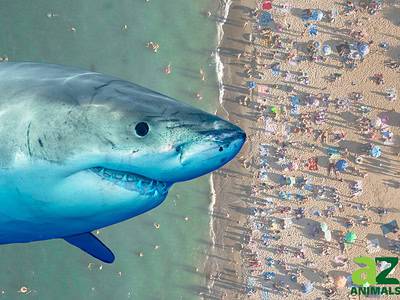Blue Eyed Pleco
Panaque cochliodon
Can live safely with many types of fish.
Advertisement
Blue Eyed Pleco Scientific Classification
- Kingdom
- Animalia
- Phylum
- Chordata
- Class
- Actinopterygii
- Order
- Siluriformes
- Family
- Loricaridae
- Genus
- Panaque
- Scientific Name
- Panaque cochliodon
Read our Complete Guide to Classification of Animals.
Blue Eyed Pleco Conservation Status
Blue Eyed Pleco Facts
- Group Behavior
- Solitary
- Fun Fact
- Can live safely with many types of fish.
- Estimated Population Size
- Unknown
- Biggest Threat
- Larger sea life animals.
- Most Distinctive Feature
- Blue eyes
- Other Name(s)
- Blue eyed plec
- Optimum PH Level
- 6.5-7.5
- Diet for this Fish
- Omnivore
- Type
- Fish
- Common Name
- Blue Eyed Plec
View all of the Blue Eyed Pleco images!
The blue eyed pleco is an omnivorous freshwater fish with an affinity for consuming driftwood and shrimp.
The large size makes it quite a sight to see in any home aquarium, which it has been consistently included since the 1970s. Even though breeding is not seen in high numbers, this 16-inch fish is enough to make anyone take a second glance.
5 Incredible Blue Eyed Pleco Facts!
- One of the main foods included in the diet of a blue eyed pleco is driftwood.
- It is genetically related to the Plecostomus catfish, which is typically kept within the same tank.
- It originally started showing up in home aquariums in the 1970s, starting in Germany. It wasn’t until a few years after these initial purchases that sales skyrocketed.
- There is no visible difference between a male and female blue eyed pleco.
Blue Eyed Pleco Classification and Scientific Name
The scientific name for the blue eyed pleco is Panaque cochliodon, though they are sometimes called the blue eyed plec. They are from the order Siluriformes which is in the Loricaridae family. The name “Panaque” is originally Venezuelan.
Blue Eyed Pleco Appearance
This fish has blue eyes, which you can probably assume from the name. The rest of the body is dark grey to black, reaching an adult length of 16 inches. They have a wide body and armored scales. They typically use their mouth to stay along the ocean floor or the bottom of their tank in shallow areas.
The Blue Eye Lemon Bristlenose Pleco is quite a stark contrast. The Blue Eye Lemon Bristlenose Pleco gets its name from the lemon color of their scales – yellow. They are practical and easy to care for, but it only reaches about 4-5 inches in length.

Blue-eyed plecos have blue eyes and gray or black bodies.
©Creative Commons Attribution-Share Alike 2.0 – Original
Blue Eyed Pleco Distribution, Population, and Habitat
Where to Find Blue Eyed Pleco and How to Catch Them
The natural habitat of the Blue Eyed Pleco is in freshwater areas of fast waters, though it prefers the Rio Magdalena, which is located in Columbia. Even if it is kept in a tank, you need to support the body with driftwood and a strong current, making the environment more like what it experiences at sea. They’ll use the driftwood as a hiding place, but they also will eat it as nourishment.
They are often bred as pets in captivity, so you should be able to find them in a local pet store. If kept in the home, the recommended tank size is 180 gallons. This tank size should be big enough to add some other fish instead.
Overall, the IUCN sees this fish as Least Concern. The population is steady as breeding is still somewhat lucrative.
Blue Eyed Pleco Predators and Prey
Though the blue-eyed pleco is omnivorous, it does not hunt any other animals. As an aquarium fish, you can feed it chopped shrimp, brine shrimp, chopped mussels, blood worms, and related foods. They can be frozen or live, and they can be fed vegetables as well, including cucumber, zucchini, and peas.
What eats Blue Eyed Pleco?
The Blue Eyed Pleco has to be paired with non-aggressive fish, so it is not eaten. In the wild, it is hunted by any animal that can get through its armored scales.
What does a Blue Eyed Pleco eat?
The omnivorous Blue Eyed Pleco will eat live or dead animals, though they typically don’t consume anything bigger than mussels or shrimp. Its diet also consists of driftwood and nearby vegetation, typically scooting along the bottom floor.
Blue Eyed Pleco Reproduction and Lifespan
Very little is known about the reproduction of the blue eyed pleco, though researchers believe they are cave spawners. As they lay their eyes, these fish prefer to find an area with fallen branches or other foliage, which will serve as food and a protective layer. Even breeding them can be difficult because their vents are hard to differentiate from.
Typically, this fish lays eggs on riverbanks and spawn, which is how so many have been located.
Blue Eyed Pleco in Fishing and Cooking
Originally, these fish were caught near Columbia. However, the recent legal restrictions make it a crime to do so. Now, the only way to get these fish at all is at a pet store, and they aren’t found in any recipes. Considering how hard they are to procure and find a good price for, the number of them and owners through the years has come down.
View all 282 animals that start with BBlue Eyed Pleco FAQs (Frequently Asked Questions)
Where can you buy blue eyed plecos?
This type of fish is found in pet supply stores across the country. You should check with your local pet supply store to find out if they carry this fish locally, but they often are found on pet supply websites for an average price of $200 to $400 each. This price depends on breeding and sourcing.
When you purchase them, make sure to find a tank size that holds at least 180 gallons of freshwater.
How big do blue eyed plecos get?
On average, the blue eyed pleco can be up to 16 inches long.
What do blue eyed plecos eat?
The typical diet of a blue eyed pleco consists of algae and wood. As a pet, they will also consume squash or potato.
Thank you for reading! Have some feedback for us? Contact the AZ Animals editorial team.
Sources
- Aqua / Accessed April 23, 2022
- Aquaticarts / Accessed April 23, 2022
- Planet Catfish / Accessed April 23, 2022
- Oak Park Natural Pet & Fish / Accessed April 23, 2022
- Wikipedia / Accessed April 23, 2022














